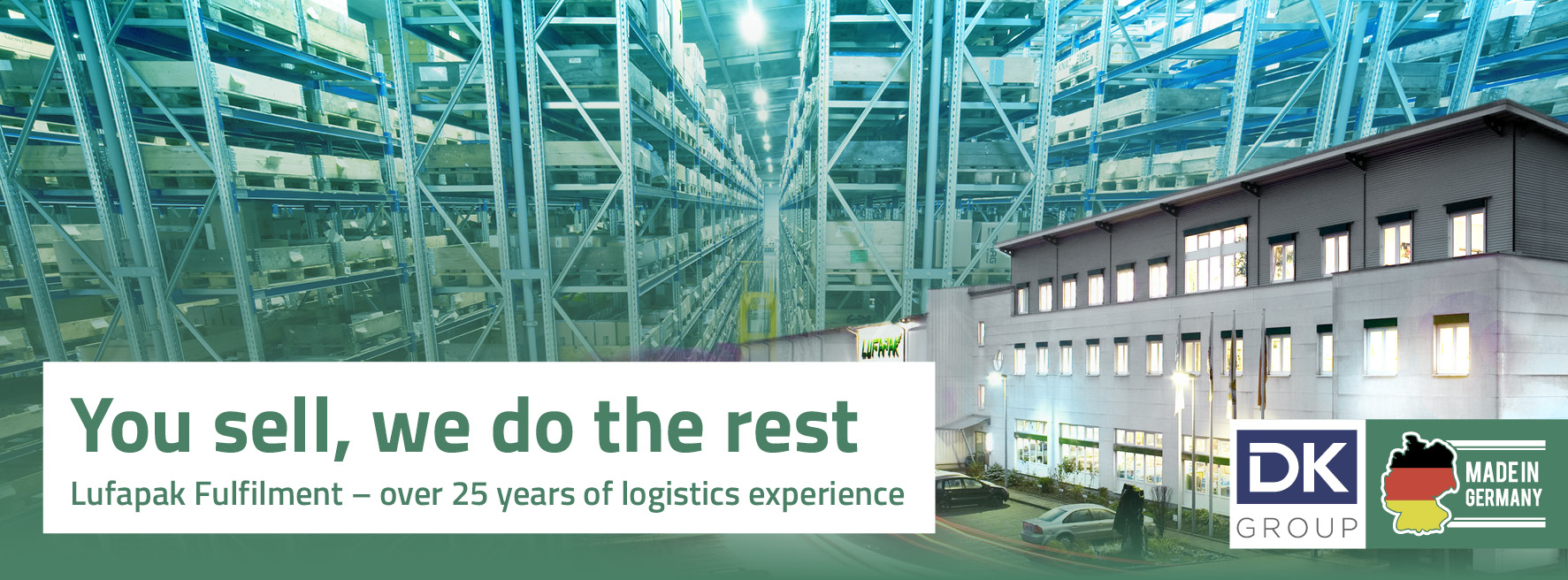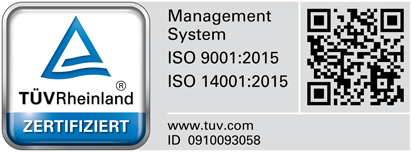sales@lufapak.de +49 2631/384-0 Contactform
Cross Docking
The optimization of goods flows presents companies with increasing challenges. Cross docking offers an efficient solution for fast goods distribution without intermediate storage. This method makes it possible to transport goods directly from inbound to outbound, saving both time and costs.
What is cross docking? Basics and how it works
Cross docking is a logistics concept in which incoming goods are immediately prepared for onward transportation. The handling process usually takes place within a few hours. Incoming deliveries are distributed directly to outgoing vehicles, which minimizes storage costs. This method is particularly suitable for perishable goods or time-critical deliveries.
The goods pass through special transshipment points, known as cross-docking stations. These have appropriate infrastructure such as ramps, conveyor belts and sorting systems. Precise planning and coordination of all partners involved ensures a smooth process.
The evolution of cross-docking in the logistics sector
Originally, cross-docking was mainly used in the food trade. Nowadays, a wide range of industries use this efficient distribution method. Increasing cost pressure and growing customer demands for fast deliveries are also fueling this development. Modern technologies such as scanner systems and tracking solutions enable precise control of the movement of goods.
Logistics companies are continuously optimizing their processes through cross-docking. Automated systems support employees in the correct allocation and distribution of goods. This technological development makes a significant contribution to increasing efficiency.

Core elements of a cross docking station
A cross docking station is characterized by its special structural design. Ramps enable the simultaneous loading and unloading of several vehicles. Modern conveyor technology transports the goods efficiently through the facility. Sorting areas are used to compile new delivery units according to destination areas or customer orders.
The technical equipment includes scanners, label printers and control systems. Employees digitally record incoming goods and allocate them to the corresponding outgoing goods. Storage space is only available to a very limited extent for short-term interim buffers.
Types of cross-docking: from single-stage to multi-stage
Single-stage cross-docking: the direct route
With single-stage cross-docking, goods are forwarded directly and without intermediate steps. The delivered units are assigned directly to the exit gates. This method is particularly suitable for pre-picked consignments or homogeneous groups of goods. This considerably reduces the time required.
The prerequisite for successful single-stage cross docking is precise planning. Suppliers must pre-sort and label their goods accordingly. Coordination between all parties involved plays a central role here.
Two-stage cross docking: flexible goods sorting
Two-stage cross docking includes an additional sorting step. Once the goods have been received, the consignments are re-picked. This method enables greater flexibility in the composition of outgoing consignments. Different deliveries can be combined to form new units.
The additional sorting requires more time and personnel. On the other hand, the two-stage system offers advantages in terms of optimizing transport capacities. Smaller consignment sizes can also be handled efficiently.
Multi-stage cross docking: complex distribution processes
Multi-stage cross docking is used for particularly complex distribution tasks. Several sorting and merging steps allow goods to be put together very flexibly. This variant is often used for international flows of goods or special industry requirements.
The increased coordination effort is justified by the optimal utilization of transport capacities. Intelligent control systems support the complex processes and ensure an overview of all goods movements.
Comparison: single-stage and two-stage cross docking
The choice between single-stage and two-stage cross docking depends on various factors. While the single-stage system impresses with its speed and low personnel costs, the two-stage variant offers more flexibility in the composition of consignments.
The specific requirements of the company are decisive here. Factors such as shipment structure, target areas and customer requirements influence the selection of the appropriate system. A precise analysis of the flow of goods helps in the decision-making process.
Cross docking logistics in practice
Requirements for a modern cross docking center
A successful cross docking center requires well thought-out planning and modern infrastructure. Sufficient gate space enables many shipments to be handled at the same time. Efficient conveyor technology ensures fast movement of goods within the facility. Modern IT systems control and monitor all processes.
Staff need appropriate qualifications for handling technology and goods. Training and clear process guidelines ensure the quality of the processes. The spatial design takes into account optimal routes and sufficient handling areas.
Transport cross docking: the mobile component
The transportation aspect plays a central role in cross docking. The coordination of incoming and outgoing vehicles requires precise time planning. Delays have a direct impact on the entire process chain. Appropriate buffer zones compensate for minor fluctuations.
Vehicle scheduling takes into account various parameters such as load carriers, destination areas and time windows. Modern telematics systems enable continuous monitoring of transports. This transparency contributes to process reliability.
Technology and automation in cross docking
Technological developments are opening up new possibilities for cross-docking. Automatic identification systems register goods within seconds and without errors. Driverless transport systems take over internal goods movements. Artificial intelligence supports the optimization of processes and resources.
This automation increases efficiency and quality in equal measure. At the same time, the physical strain on employees is reduced. The integration of different systems enables end-to-end processes without media disruptions.
Advantages and challenges of cross-docking
Opportunities of the cross-docking strategy
Cross-docking offers numerous advantages for companies. Reducing stock levels lowers capital commitment and storage costs. Faster throughput times shorten delivery times and increase customer satisfaction. Optimized transport utilization reduces vehicle movements and CO2 emissions.
This increase in efficiency has a positive effect on competitiveness. Companies react more flexibly to market requirements and fluctuations in demand. Process optimization leads to sustainable cost savings.
Potential risks and solutions
The implementation of cross docking also poses challenges. Disruptions in the process flow can quickly affect the entire supply chain. The high coordination effort requires powerful IT systems and trained personnel. Not all product groups are suitable for this form of distribution.
Careful planning and regular process analyses minimize potential risks. Contingency plans ensure the ability to act in the event of unexpected events. The gradual introduction enables controlled learning and optimization.
Future prospects: Cross Docking 4.0
Advancing digitalization is changing cross-docking in the long term. Predictive analytics enables more precise planning of goods flows. Blockchain technology creates transparency along the entire supply chain. Robotics and automation further increase efficiency and precision.
These technological developments open up new optimization potential. The integration of different systems enables end-to-end process control. At the same time, the requirements for IT security and data protection are increasing.
Conclusion: The importance of cross-docking for modern supply chains
Cross-docking is increasingly becoming the standard for modern logistics concepts. The combination of speed, efficiency and cost savings is winning over more and more companies. Technological innovations are driving this development forward.
Careful planning and consistent implementation remain crucial for success. The coordination of all parties involved requires clear processes and open communication. Cross-docking offers the potential for sustainable competitive advantages.
Contact us now and get advice

